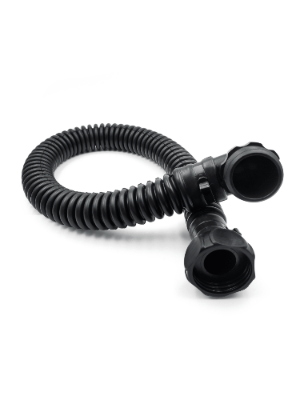Maintenance Tips for Your 40mm Gas Mask Hose
When it comes to personal protective equipment (PPE)—particularly in a hazardous area—reliability can be the difference between safety and peril. The 40mm gas mask hose is an important part for anyone using a NATO-standard gas mask, military service members, survivalists, industrial workers, or devoted enthusiasts in airsoft or recreationally dressing up as a soldier or other character. The 40mm blemish cutoff gas mask hoses act as a connector between the gas mask and a clean air source or filter that keeps hazardous agents out of the respiratory system.

As with any equipment directly responsible for safety and protection, it is critical to maintain the gear to ensure the best performance. The good news is that maintaining your 40mm mask hose involves a few simple steps. In this blog, we will highlight basic maintenance tips for your gas mask hose. This will include: cleaning, inspecting, storage, and issue troubleshooting.
Know the Use of the 40mm Gas Mask Hose
Before looking at maintenance, it is good to know how your 40mm hose operates as part of the respirator. Its flexibility allows the user to move the filter or canister away from the face, giving way for better comfort and usability, especially if it is going to be used for a long period. Any failure in this potted system, e.g., (tear, loose connection), has a chance to create a potential serious exposure. Therefore, maintenance of the 40mm mask hose is more than cleanliness or longevity; it is a question of safety.
Regular Inspection is Key
Routine inspections should be part of your PPE protocol. Here's what to look for:
-
Cracks and Splits: Flex the hose gently and examine it under bright light. Look for any visible cracks or signs of aging.
-
Connector Integrity: Ensure that both ends (usually threaded 40mm NATO connections) are intact and not worn down or cross-threaded.
-
Elasticity and Flexibility: Over time, rubber or polymer materials can stiffen. If your hose feels brittle or resists bending, it may be time to replace it.
-
Smell Test: If the hose emits a strong rubber or chemical odor, it may be degrading internally.
Perform these checks at least once a month if your gas mask is in regular use. For emergency kits, inspect every 3–6 months.
Cleaning the Hose Properly
Properly cleaning the 40mm gas mask hose is important after being in a contaminated environment and also as part of regular maintenance.
Materials needed:
-
Unscented, non-abrasive, mild detergent
-
Warm water (not hot)
-
Soft brush or cloth
-
Clean towel/drying rack
-
70% Isopropyl alcohol for disinfecting
Instructions:
-
Remove the hose from the mask and filter.
-
Scrub the inside and outside using a soft brush, paying close attention to the ridges or bends.
-
Shake out most of the moisture and allow to drain and air-dry completely (ideally hung vertically in a well-ventilated area).
Pro Tip: Never use bleach or strong chemicals because they can damage the hose material and ultimately leave behind dangerous residues.
Storage Best Practices
How you store your 40mm gas hose directly impacts its longevity.
Do:
-
Store in a cool, dry place.
-
Keep away from direct sunlight and UV exposure.
-
Use a sealed container or storage bag to prevent dust and insect damage.
Don’t:
-
Don’t store in a folded or kinked position—it weakens the structure.
-
Don’t place heavy objects on top of it.
-
Avoid proximity to oils, fuels, or corrosive materials.
If the hose is part of a go-bag or emergency kit, make sure it’s easy to access but still well-protected.
Watch for Environmental Degradation
Your CBRN filter may degrade due to environmental conditions even when not in use. Humidity, heat, and pollution around your hose can cause materials like rubber to degrade faster, especially in regions like tropical and coastal environments. Pack some desiccants or silica gel packets in your storage container to absorb moisture.
If you’re planning on storing the hose long-term, maybe inspect it sooner than later after it has been moved to a new environmental condition as well as seasonal changes.

Know When to Replace
Although you take care of your hose, eventually every piece of equipment has a lifespan:
-
Cracks or leaks beyond cleaning.
-
Loose or stripped threads on the connectors.
-
The hose material has become discolored or has a “sticky” feel.
-
Stiffness or less flexibility.
-
The hose hangs up with airflow when used.
A quality gas mask hose, e.g. NATO 40mm, should last for years with moderate use but heavy-duty applications will wear it out sooner.
Bottom Line
Regular inspections, proper cleaning, and careful storage will extend the hose’s life and ensure it functions when you need it most. If you’re in the market for a durable, NATO-standard 40mm gas mask hose, we recommend the Gas Mask Hose 40mm NATO Military Hose available at Supergum Shop. Built to meet military-grade standards, our hose offers superior flexibility, chemical resistance, and airtight performance—ideal for both professional and personal preparedness.


